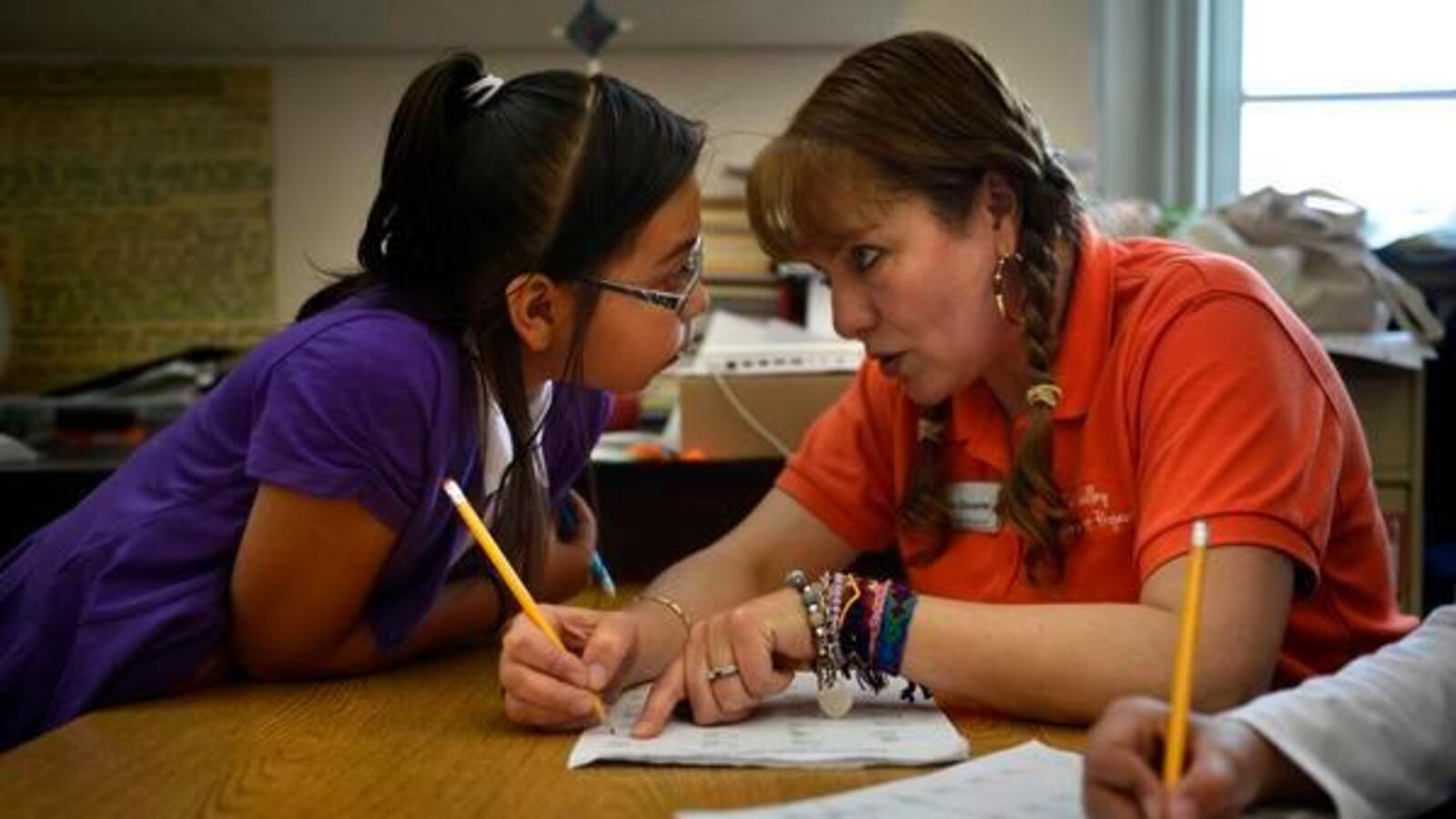A Denver charter school posted the highest average ACT scores for black students in the state last year. Multiracial students in the Roaring Fork school district showed more academic growth on state tests than their white peers. And the Platte Valley district in Weld County has over time achieved impressive improvements in the number of students at grade level.
Meanwhile, graduation rates are declining for all groups of students in El Paso County’s Falcon 49 district, and a district with several new online schools has seen its test scores fall.
Those are some of the findings from a new report by Denver-based education reform advocacy group A Plus Colorado. Called “The Outliers: The State of Colorado School Districts,” it examines how school districts across Colorado are serving different groups of students.
Here are six interesting findings from the report:
DSST: Green Valley Ranch High School, a link in Denver’s biggest charter school chain, is the only high school in the state, out of nearly 500, where black students scored at least an average of 22 points on the ACT college entrance exam. The average score in 2016 was 23.2.
On a district level, the district with the highest average ACT score for black students was Poudre in Fort Collins. The district with the lowest average score for black students was Pueblo City 60.
The school where Latino students earned the highest average ACT scores last year was D’Evelyn Junior/Senior High School in Jefferson County, with an average score of 27.4
Another Jeffco school, Evergreen High School, had the highest average ACT score — 25.9 — among students who qualify for free or reduced-price lunch, a proxy for poverty.
Similar to smaller Platte Valley, the 3,200-student Fort Morgan district has shown dramatic improvements over the past four years in the percentage of students who are proficient on state elementary math tests and middle-school English tests. More than two-thirds of students in Fort Morgan are children of color and the same proportion qualify for free and reduced-price lunch.
Colorado’s largest district, Denver Public Schools, which serves more than 90,000 students and has similar demographics, also leaped from ranking in the 15th to 20th percentile statewide on state English and math tests in 2013 to the 43rd percentile in 2016, near the state average.
Among the districts that showed declines over that time period were Manitou Springs, Johnstown-Milliken in Weld County and Aspen, which ranked high in elementary math when compared to other districts in 2013 but fell 34 percentile points by 2016.
The mostly white, mostly non-low-income 2,500-student Steamboat Springs district saw a higher proportion of students meet grade-level standards on state tests last year than districts with similar demographics, such as Boulder Valley and Littleton.
On the whole, Colorado’s students of color and low-income students show slower academic growth on state tests year to year than their white, more affluent peers. But students in some districts buck that trend. One example? The 170 Latino students in the East Grand school district — which serves Winter Park, Granby and other communities — showed higher academic growth on state English tests last year than the district’s 1,000 white students.
The 3,000-student Byers school district, east of Aurora, showed some of biggest declines in student performance over the past four years when compared to the rest of the state. However, the report notes that Byers authorized several multi-district online schools in that time period, which “continues to beg the question of the value of these particular school options.”
While Colorado’s overall four-year high school graduation rate has improved from 2011 to 2015, some districts have made even faster progress. For instance, the 1,500-student Sheridan school district saw its graduation rate improve by 39 percentage points during that time period.
Other districts stand out for the graduation rates of certain groups of students. The 2015 graduation rate for black students in Cherry Creek, where 11 percent of students are black, was 84 percent, the fifth-highest graduation rate for black students in Colorado.
However, several districts still maintain low graduation rates. Aurora had among the lowest rates for black students, Latino students and English language learners in 2015. Englewood is at or close to the bottom for all three groups, as well: in 2015, just 25 percent of black students, 40 percent of Latino students and 41 percent of English language learners graduated.
The report did not seek to determine what factors, such as a curriculum or teaching staff, may be contributing to why the schools and districts were successful or not.
Read the report in its entirety below.

